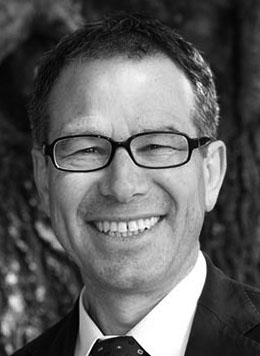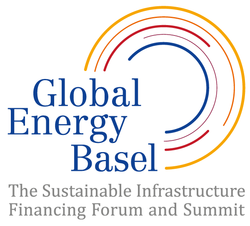Sustainable Infrastructure InvestmentInterview on Global Energy Basel Summit
CSCP: Mr. Wiener, the 3rd Global Energy Basel Summit on Sustainable Infrastructure and Financing successfully took place from 22-23 January 2013. What was your personal highlight?
resilience into the city’s long-term plan, Johannesburg is having difficulties accessing finance. Johannesburg faces a significant challenge to raise annually some $1 billion for infrastructure. But even this sum is probably far below what is actually needed. As a point of comparison, the small and already highly developed city of Basel currently allocates about $300 million per year.
CSCP: For the first time you organized a capacity building day during the GEB summit for global players in the field of sustainability, entrepreneurs and city officials to discuss and share information on tools and principles of sustainable infrastructure. What was the focus of this session and what were the key learnings?
Daniel Wiener:The main focus of the capacity building day was the GEB Self-Assessment Grading Tool and how it is currently being used by organisations involved in project finance. We also focussed on the concept of sustainable infrastructure. Participants stressed the helpfulness of the GEB Self-Assessment and Grading Tool, its simplicity and efficiency.
One learning was that we might need to fine-tune the tool to meet the needs of projects at different implementation phases rather than the needs and perspectives of institutions or municipalities. In my view the greatest achievement of the summit was the opportunity to cooperate on harmonizing existing tools with partners like the CSCP and the Harvard Graduate School of Design’s Zofnass Program for Sustainable Infrastructure.
CSCP: In addition to plenary sessions and policy roundtables, the summit also led investor forums that focused on connecting a wide diversity of stakeholders.
Some sustainable infrastructure projects from the CSCP network were among projects ranked within the GEB sustainability ranking scheme and were presented to potential investors. Can you share with us what was the driving force behind the creation of the Sustainable Investment Forum and what opportunities do you see going forward?
Daniel Wiener: The aim of the Investment Forums was to create a platform for short investment pitches for Sustainable Infrastructure projects that are seeking investors for their projects. There were four Investment Forums for projects within the fields of Energy, Water and Waste, Transportation, Mobility and Logistics and Redevelopment, Revitalization and Sustainable Property. Future opportunities lie with the enormous demand among project owners for a year round matchmaking platform coupled with the interest of investors and academia in the GEB project portfolio.
CSCP: Looking ahead to the 4th Summit in May 2014 and beyond, what trends do you foresee in sustainable infrastructure financing?
Daniel Wiener: With ever growing migration to urban areas, particularly in emerging markets, political leaders are looking to create sustainable infrastructure that reduces risks and expense. To make these infrastructure projects more appealing, GEB has proposed an exchange fund to minimize potential downsides and to diversify risks. The key theme of this approach is to prepare to receive funds from strategic asset allocators (institutional investors) and ultimately create a Sustainable Infrastructure Asset Class.
CSCP: Many thanks for your time, Mr. Wiener. |
||

